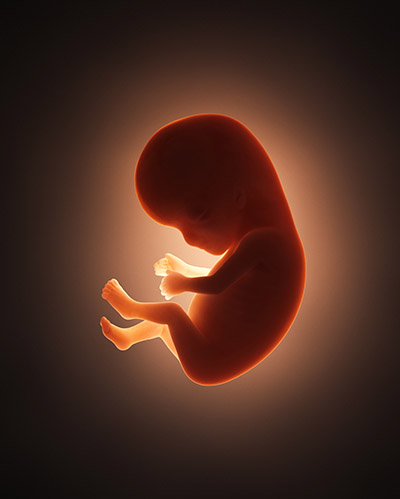
|
If you have nothing better to do on a rainy Sunday afternoon, you might muse about where our technological civilization is ultimately going. And that thinking also configures the kinds of civilizations we are likely to meet out among the stars. Fortunately, you don’t have to speculate, because Soviet astronomer Nikolai Kardashev in 1964 proposed classifying advanced civilizations according to their access to and use of energy.
Energy is the basis of modern human civilization. Of course, we need safe ground, clean air and water, and available and nutritious food—and those are givens. But to live as we do in the First World today, we also need energy. And with sufficient energy, we can clear the ground, clean the air and water—and make fresh water from sea water—and grow more food or manufacture it from raw materials.
Previous human civilizations might not seem to have been as energy dependent as we are today, but their energy use is masked by a brutal fact. They did not depend on developed technologies that obtain and use energy from coal, oil, or natural gas, or build hydroelectric dams, nuclear reactors, solar panels, windmills, or any of the other resources we now take for granted. Instead, ancient civilizations depended on animal energy—mostly draught horses, oxen, and human slaves—to provide the work that we get from motors driven by those developed energy resources.
The ancient Egyptians and other “hydraulic empires” dipped water from the local river with counterbalances known as “shadufs,” where the differential driving the action was human muscle. The Romans developed the water wheel late in the game as a method of lifting water using the river’s own flow, and the torque from the axle could then also be used to turn grain mills and for other purposes. The ancients burned wood and charcoal for cooking and heating, and they burned lipids from waxes, animal fats, and vegetable oils to light their homes. They sometimes discovered surface deposits of coal and petroleum and used them for heating. They also burned animal and plant wastes, as well as peat deposits when found nearby. But the major source of motive and industrial power was still animal and human muscles.
On the Kardashev scale, a Type I civilization is able to access and use all of the energy and material resources of a planet. This would imply the capability for interplanetary if not interstellar travel, because it would make sense to preserve the livability of your home planet—making it a habitable safe haven, if not indeed a garden paradise—while you are tear apart a neighboring planet. Live on Earth and piecemeal the substance of Venus or Mars.
In this sense, our current First World civilization exists at about level 0.35. We extract coal, oil, natural gas, and uranium from easily accessed geologic strata. We harvest sunlight falling on a mere fraction of the planet’s surface. We have pretty well dammed and developed most of our major inland rivers, but we are only beginning to access the rivers of air that circulate in the atmosphere and have not yet touched the rivers of water found in the Earth’s oceans. We access geothermal energy when a nearby aquifer intersects with a surface hotspot, but we do not dig deeply enough to access the heat energy in the mantle and magma—and we prudently steer clear of most surface volcanos because we can’t yet predict and control their eruptions. We mine surface deposits of iron, nickel, copper, silver, gold, and other metals, but we do not have the technology to dig into the planet’s rich iron-nickel core.
We have not yet tried to access—nor are we capable of reaching—any of the nearby planets for their resources. We do, however, have our eyes on the 203-mile diameter asteroid named “Davida,” because it has metallic content—nickel, iron, and cobalt, plus resources of water, hydrogen, nitrogen, and ammonia—valued at $27 quintillion. Several other asteroids have similar metallic resources. If brought home from the Belt, they would either satisfy human needs for thousands of years—or instantly bankrupt every metal-mining operation on Earth and throw our global economy into such disruption that war and revolution would break out.
A Type II civilization makes use of the energy and material resources of an entire star system. Again, this would imply interstellar travel capability, because you don’t want to re-engineer or deconstruct the star that your home planet orbits while you are trying to live there. Your civilization migrates to a different star, or you go to work on a neighboring star. This level of energy use would also suggest that you have developed technologies to transmute atoms and molecules from one useful material to another—or to fabricate subatomic particles, atoms, and molecules out of pure energy.
We already have chemical technologies to transform near-neighbor molecules from one form to another. We make long-chain polymers—that is, plastics—from hydrocarbons, as well as processing one type of hydrocarbon to another during oil refining. We can change the nature of sugar and cellulose. And we make explosives out of various nitrogen compounds. But none of this capability yet reaches the submolecular or subatomic level.
The ability to make full use of a star’s resources would be most readily apparent when a civilization attempts to construct a Dyson sphere. Named for its inventor—or maybe “imaginator” or “conceptualizer” would be a better term—Freeman Dyson, this is a series of rings or a shell to enclose a star and create living space on its interior. The diameter would be the Earth’s orbit, so that the received sunlight would approximate that of a habitable planet. And the surface area would be many thousands or a million times the surface of the Earth. Since the mass of such a structure, even with the incredible tensile strength and thinness of some exotic material, would outweigh all the planets in a richly endowed system like ours, constructing such a sphere would require tearing apart several star systems. And you would have to perform some basic transmutation to create your wonder material for the shell system. These are technologies we can’t even begin to propose as yet.
Our astronomical instruments, such as the orbiting Kepler observatory, have discovered at least two stars whose brightness dips regularly to a shade of darkness that would not be the shadow of any credible planet. Absent another natural event we might observe or imagine—like the recent mass ejection in the star Betelgeuse, which dimmed its brightness for a while—these stars might be in the early stages of enclosure with a Dyson sphere. The recently launched James Watt Telescope, with its greater observing power in the near-infrared, would be a perfect eye to focus on these stars.
A Type III civilization makes use of the energy and material resources of an entire galaxy. Such engineers would use and dispose of stars in the way we build and fuel nuclear reactors. They might—if you want to let your imagination run wild—extract the singularity from their galaxy’s internal black hole and use it in their ping-pong games. Such people with such technologies would be as gods to us.
Kardashev never defined a Type IV civilization, but theorists claim such beings would make use of an entire universe. In that case we would already have met them, because they would have either colonized or destroyed our own galaxy, or our star system, or planet Earth in the process of exercising their powers. And a Type V civilization would have found a way to travel outside our universe and explore or make use of other universes—if such there be. But our small human imaginations cannot even consider, nor our theoretical physics encompass, such a situation … yet.
If there are civilizations at Type II and III levels, then they will be much more powerful than we are now or are likely to become in the near future. Meeting them would either be a wonderful opportunity or a civilization-ending catastrophe—likely the latter. If the meeting between European colonists armed with steel weapons, gunpowder, and other marks of superior technology and resources went badly for the native Americans, with their stone tools and not even the horse or the wheeled cart to carry them, imagine what it would mean to meet up with a civilization than can snuff out entire stars and galaxies.
If the James Webb Telescope ever sees a star or a galaxy suddenly go dark—but look twice and, please, check your data!—then it might be time for us to become afraid.

